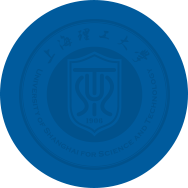
The discipline of Optical Engineering of University of Shanghai for Science and Technology, led by its PI Zhuang Songlin, the famous optical expert and academician of Chinese Academy of Engineering, can be traced back to the discipline of Optical Instruments established in 1960. In 1981, it was conferred the right to offer master's degree programs. In 1998, it was conferred the right to offer d...

The Research Team of Ultra-precision Optical Manufacturing led by Professor Zhuang Songlin, the Academician of the Chinese Academy of Engineering, and Professor Zhang Dawei, focus on the frontier interdisciplinary study of Optofluidics, Nano-photonics, ultrafast optics and life science, and have been actively engaged in innovations. The discipline of optical engineering, to which the research team is affiliated, has been selected as one of the disciplines supported by the Peak Discipline Construction Scheme of Shanghai, and Shanghai First-Class University and Discipline Program.

With the development of modern science and technology, the study of optics has achieved unprecedented precision in the space and time dimensions. In terms of time scale, optics has been extended into the femtosecond [10-15 s] to attosecond [10-18 s] regions. As the light pulse shortens in time domain, the peak power reaches the level of terawatt [1012 W] - petawatt [1015 W]. The ultrashort optical pulse excitation and ultrastrong field of optical pulses have greatly enriched and deepened the interaction between light and matters, giving rise to a new and promising discipline - ultrafast optics. Since its generation in the 1990s, the research content and scope of ultrafast optics have been constantly expanded and deepened, which is of great significance to the development of laser technology, spectroscopy and material structure analysis. At present, ultrafast nonlinear optics has become a cutting-edge subject and hot spot in the field of optics.

The Strategic Innovation Team for High-End Equipment System Integration and Simulation, taking national development strategy as its guidance, focuses its research on the key scientific issues of great social value and application prospect, and those concerning the development and future of our nation. The team, based on their common research interests, goals, and previous achievements, and with merged advantages of two key disciplines of USST (System Science---- a “Peak Discipline”, and System Engineering----a featured discipline for its application in national defense), has been devoted to modeling, analysis, fault diagnosis, synthesis, integration and simulation of the structure, performance and function of high-end equipment complex system used in the intelligent manufacturing and national defense sectors by the application of the principles and methods of system theory, information theory and control theory.

The research team focuses on exploring the macroscopic and microstructure properties of biomedicine by means of the physical characteristics of multi-spectrum and different spectral bands, to promote the application of precision spectral detection technology in biomedicine sector through all-round examination of cells and tissues, and to develop precision spectrum biomedical detector and analytical instrument used for biomedical assisted diagnosis. By exploring the multi-spectral signal characteristic spectrum of different biological structures and influencing factors in vivo and vitro to get the multi-spectral fingerprint information of biological tissues, it can construct a real-time multi-band spectral analysis system for the detection of biological tissues or structures, providing assisted medical diagnosis.

Nano-photonics, especially its comprehensive utilization of multiple factors in light field has become one of the key directions for the future development of optics and has been listed as one of research orientations of the National Natural Science Foundation of China in the 13th-five-year-plan period. In 2017, the research project “A Study of a Multi-dimensional (polarization, phase, frequency, amplitude, pulse width and mode field) New-Type of Light Field by Means of Precise Control of Physical Interaction between Light Field and Matter and its Interdisciplinary Applications in Information, Chemistry, Life Science and Materials Science” was listed in the 2017 national major research plans, and it will remain listed as the major research plan in the next five years. It serves definitely as a driving force for the team to promote the original research work in the field of Nano-photonics in the future so as to occupy the leading position.

In recent years, the team has conducted a series of studies on Terahertz quasi-particle theory and relevant core devices, including excitation, propagation, radiation and conversion of plasmons, and various Terahertz core devices such as broadband Terahertz radiation sources, Terahertz isolators, Terahertz absorbers, Terahertz modulators, Terahertz filters, etc. With solid theoretical basis for developing Terahertz quantum electromagnetism, the team boasts the ability to develop various types of Terahertz devices.

The research area of Medical-Optics Team include photoelectric detection, optical instrument development, research and development of minimally-invasive medical equipment, the modern medical image processing, medical image/medical information processing and analysis technology, computer-assisted diagnosis based on medical image, optics for medical treatment, operational research and cybernetics, combinatorial optimization, multi-modality medical imaging technology, bio-optics, opto-electro-mechanical-system integration and control, power electronic technology, and biophotonics, covering almost all the research fields in medical optics with strong capabilities for further research in the field of biomedical detection.



Copyright@2018 University of Shanghai for Science and Technology. All rights reserved. 沪ICP备08108292号-5 沪公网安备:31009102000040